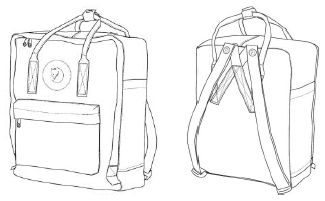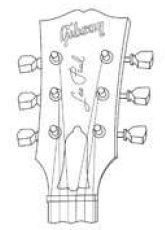It is not always easy to determine the minimum threshold for distinctiveness when protecting a three-dimensional trademark. Given the disparate criteria applied by European justice in this matter, and with a view to providing a joint solution to the issue, a guide for Common Practice has been issued for the procedures that were put in place in July this year, and which is applicable to all EU territories. The guide sets out the conditions that additional elements must meet to ensure distinctiveness of the sign overall.
European intellectual property offices within the framework of the Convergence Program, have agreed a Common Practice for establishing the criteria for validity of three-dimensional trademarks that have a non-distinctive shape, but which include additional elements.
Despite being labelled “unconventional trademarks” it is a clearly observable fact that three-dimensional signs are becoming increasingly common in our trademark aquis. These are trademarks consisting of the shape of the good, its packaging or trade presentation, something that makes them a particularly attractive asset for companies as they are instrumental in influencing consumers’ decision making process.
As in the case of other types of trademarks, the requirement of distinctiveness, deemed to be an ability to identify the goods or services with a specific business origin and distinguish them from other operators in the market, is an indispensable prerequisite for registering and operating as a trademark.
We frequently find cases where trademarks are refused access to the three-dimensional trademark register, either because they fall within the scope of one of the absolute prohibitions set forth in article 3 of the Trademark Directive, recently addressed in case C‑237/19 – Judgment of 23 April 2020), or because they take the form of a commonly used shape, and therefore they lack distinctiveness.
The complex task of assessing the validity of these signs is further accentuated when we encounter three dimensional trademarks that have a non-distinctive shape, however they include additional elements – verbal, figurative or with colors – which need to be borne in mind when analyzing the mark overall.
In this way, by including an additional component in the three-dimensional representation, it is possible to obtain protection for a common or customary shape which in itself lacks distinctiveness.
This issue is not devoid of controversy, as in many cases it has led to contradictory decisions. Thus, the EU General Court confirmed the distinctiveness of respective signs consisting of a golden bottle (cases T-324/18 and T-325/18), whereas it refused trademark registration of bottle shapes (see case T-68/18), and other trademarks which included the color gold as part of their presentation, as occurred with the famous Lindt chocolate bunny (case C-98/11 P), and previously with the gold chocolate ingot (accumulated cases T-324/01 and T-110/02), or, more recently, case T-546/19.
There are numerous cases where three dimensional trademarks have successfully overcome the examination procedure and obtained registration, only to be subsequently declared invalid (following a third party invalidation procedure), on grounds of failure to fulfil the requirement of distinctive character. One such case is that resolved by the General Court in T-580/15 “CLIPPER”.

Similarly, we find cases where the trademark has been refused in some EU territories, whereas it has been successfully registered in others. There are also cases in which a sign has been refused at national level in a member state and then went on to be registered as a European Union Trademark, thus extending its effects to those territories.
This was the case of EU trademark no. 11711496, which was validly granted for goods in class 18 (backpacks) but which had been refused registration in Hungary and Croatia among other territories.

The essential difficulty in such cases is how to determine that the minimum threshold of distinctiveness is met in the case of three dimensional trademarks containing other elements, when the shape itself is not distinctive: What size should the additional elements be? What should be their proportion? Which is the ideal location for them within the sign? Which colors are the most distinctive?
In an attempt to provide an overall solution to such issues, the aforementioned Common Practice guide has been published and it applies to all the EU territories in procedures initiated from July this year, and it sets out the requirements for ensuring that additional elements can be deemed appropriate to ensure overall distinctiveness of the sign.
To begin with, the document lists the factors and aspects to bear in mind in respect of three dimensional trademarks which include the following additional elements:
- Verbal or figurative elements: the size or proportion of these elements, their contrast with respect to the shape, and their actual position on the sign.


- Colors: these are restricted in those cases where use of a specific color, or combination of colors, might unfairly restrict their availability to other traders offering goods or services in the market.

- Combinations of different factors and elements: this will depend on the general impression that the combination of these factors and elements produces.

The guide includes an extensive range of practical examples, illustrating the different criteria and combinations enumerated previously, which aim to lay down guidelines for achieving common practice.
The truth is that, despite the fact that the document endeavors to define a set of fair criteria for assessing this type of sign, it is clear that in practice, providing a conclusive answer in some cases is simply not viable, and inevitably we will have to resort to interpretation and debate regarding the degree of distinctiveness of different marks.
It is important to bear in mind that part of the goal of aligning the criteria of the various offices at EU level, is an underlying interest in preventing abuse in the use of these exclusive rights, through granting an indefinite monopoly to a specific shape that has only a scant degree of distinctiveness, and as a result making it hard for other competitors to access the market, thus reducing the choices available to consumers within a common economic area.
Marta González Aleixandre
Garrigues Intellectual Property Department






